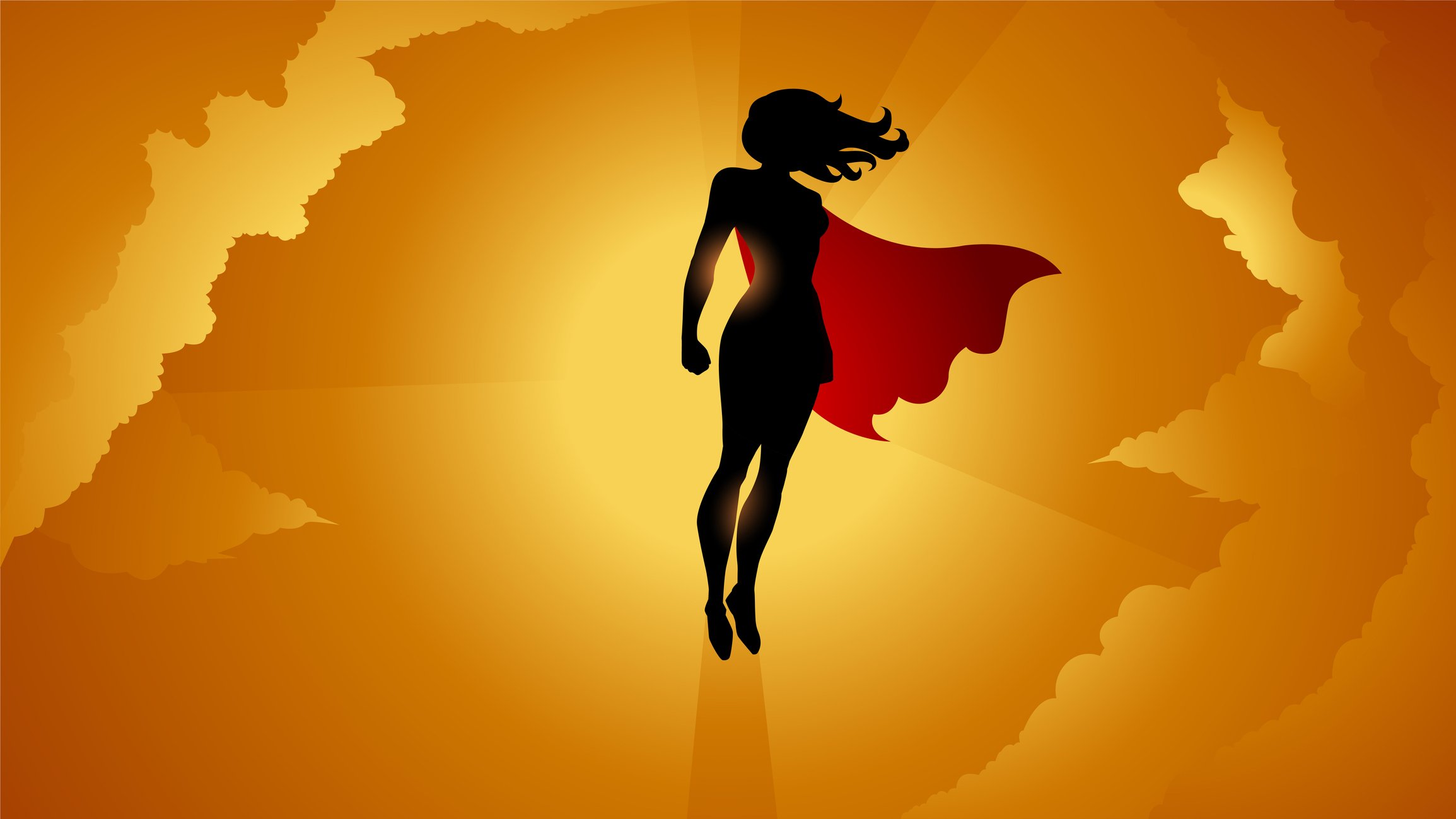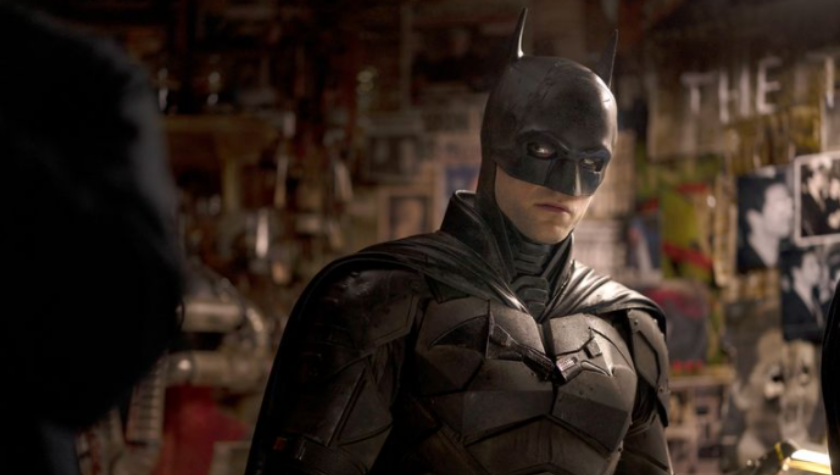History of TV: The wild, villainous and always over-the-top ‘Gotham’
October 14, 2021
“However dark and scary the world seems right now, there will be light. There will be light, Bruce.”
Now that we’re deeply entrenched in October and covered extraterrestrials in last week’s History of TV, we’re pivoting from sci-fi to fantasy with Gotham. This is where I’d like to say something quip-y about celebrating a "Long Halloween" this month (of which Gotham did adapt some elements from this classic DC comic book limited series for season four), but no matter what the holiday, Batman is a good idea. At least it was in my house growing up when Adam West reruns still graced the small screen and Val Kilmer wore the cape in theaters.
Then, in 2014, three new superhero shows premiered: NBC’s short-lived Constantine, CW’s ongoing The Flash, and Fox’s Gotham. Batman’s origins may be the draw, but the show is actually more about rookie James Gordon’s (Benjamin McKenzie) rise to commissioner. His first case? Why, solving the murder of Thomas and Martha Wayne, of course. Yes, Bruce (David Mazouz) is integral to the story, and we spend the most time with him as a boy than in any other Bat-based screen incarnation so far. When "they" say you need a fresh way into a story, Gotham listened. But more on that in a minute. First:
Setting the stage through aesthetic
Can’t really get away without talking about it when a superhero property based in comic book land is involved. Gotham especially had that edge of darkness, pushed to the utmost stylistically — sometimes campy — as it possibly could go for a network show. We’re talking more Tim Burton than Joel Schumacher. There were at least 50 shades of gray and black with appropriately gothic style elements to elevate the production value — as did the colorful cameos of so many Gotham City regulars, most notably Selina Kyle/Catwoman (Camren Bicondova), Oswald Cobblepot/Penguin (Robin Lord Taylor), Edward Nygma/The Riddler (Cory Michael Smith), and of course Alfred Pennyworth (Sean Pertwee).
Now, you may think I’m missing the Clown Prince of them all, but in the business-driven weirdness that is Hollywood, turns out Joker is reserved for the big screen. Who knew you were allowed to make a show about Batman, yet his greatest adversary is off-limits? But Cameron Monaghan brought the Valeska twins to life so twistedly, that Jeremiah Valeska can’t really be alluding to anyone else... which is just one of the many expressionistic ways the writers told Gotham’s stories.
A fresh perspective on old IP
And there are plenty of Batmyths to explore in Gotham City... As primarily a crime drama, creator Bruno Heller (The Mentalist) structured the first season especially as a case-of-the-week police procedural in a city where two crime families are fighting for dominance. As Cobblepot tells Gordon in the pilot, "There’s a war coming." That war creates supervillains that shine brighter than Brue, Gordon, and the rest of them. The pilot is fun for the cameos alone, and by cameos, I mean Catwoman, Penguin, The Riddler — he works with the police!? — and Poison Ivy; all of them in their younger years and most pre-total insanity. The full crazy is saved for later seasons. Which is why we watched week-to-week as Gotham evolved into a more serialized structure, as the villains solidified into their caricatures and Bruce started down the vigilante path that would end five seasons later in "The Beginning," the show’s 100th and final episode, with him as Batman. Finally.
As a screenwriter, one of my favorite parts of the show was the opening minutes of the pilot. It’s called Gotham, we know it’s gonna be about Batman, yet the first thing we get is Selina Kyle. We’re tipped off pretty quick that this sly young girl is well on her way already to becoming Catwoman, so there’s fun in that, but mostly, the fact that the female contingent in something as testosterone-based as superheroes is the first thing we see — and then continued with the introduction of Barbara Kean (Erin Richards) as Gordon’s fiancée with a very clear past we just can’t wait to find out more about when sharing screen time with Renee Montoya (Victoria Cartagena); we just know this telling of the Batverse is going to hit differently.
Even superheroes have themes
“You can’t have organized crime without law and order.”
And I’m not talking about songs. This is perhaps one of the best parts of genre television; the ability to touch on subjects, themes and motifs relevant to modern society. In the Gotham pilot alone we encounter the idea of "swift justice" and how far one is willing to stretch their morals for the greater good. For Gordon, at least for the moment, the end does not justify the means. Which is directly in line with Batman canon about not killing people (with guns). You can see the parallel between Gordon as a law-abiding officer, and the future vigilante Batman adhering to a code, as well.
Conquering fear is another theme that pops up again and again in Gotham. As Gordon tells Bruce in the pilot, "Fear’s a good thing, it tells you where the edge is." Earlier in the episode, a character states that Gotham City is on a "knife’s edge." Clearly, everyone is walking a line, and everyone has a fear, no matter how deep-seated. Threading these ideas through the storylines pulls the fantastical world inward, grounding it in relatable ideas.
In retrospect
As a personal testament to Gotham and its incredible writing team, there’s a moment in the pilot where they even manage to extract a little empathy from me for Cobblepot — and that says a lot, considering Penguin is one of the only villains I’ve ever lost terrified sleep over.
As a study for screenwriters, one can learn a lot from the structure and tone setting. As a superhero fan, it’s just a plain fun way to spend an evening Netflix and maybe not chilling — it is almost Halloween after all, and there are plenty of cringe-worthy moments in Gotham.
Written by: Karin Maxey
After seeing her first big screen movie 007: License to Kill at age six, Karin naturally became obsessed with writing action-infused stories. The next time she’d see Benicio del Toro was in person, at the 68th Cannes Film Festival—he was there for the Sicario red carpet, she was there for her first produced short film in the basement of the Palais…same-same. In between, Karin earned a Creative Writing Degree and landed management at Echo Lake Entertainment. Her scripts have been a Big Break Top 3 finalist, HollyShorts Film Fest Official Selection, and a multi-Screencraft competitions semi-finalist. Karin is also a screenplay editor who delights in the process of polishing writers' work for submission. You can find her at www.writergirlkarin.com.- Topics:
- Discussing TV & Film




